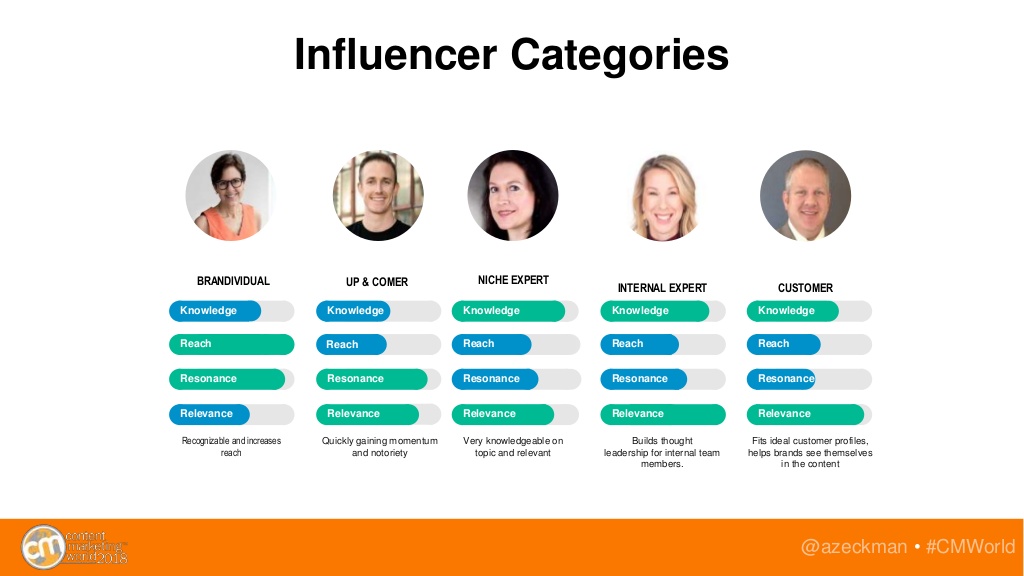It’s no wonder that Ashley Zeckman, Digital Strategy Director at TopRank Marketing, drew a crowd last week at Content Marketing World: she promised to debunk the prevalent myth that influencer marketing is best suited for B2C brands. And as an added bonus, she debunked five other lies about B2B influencer marketing along the way. But Zeckman points out the key difference in those B2C tactics and the new way of B2B influencer marketing: Rather than unapologetically telling us to buy a product, #B2B influencers are collaborating around an idea. If your goal is to engage a more specific audience segment, aim to include up-and-comers who resonate with your audience, and are consistently creating content that’s highly and specifically relevant to your target. Take, for example, the B2B influencer campaign that Zeckman and TopRank Marketing partnered with Prophix to create. A great example of this is action is a podcast series Zeckman and the TopRank Marketing team worked on with 3M. TopRank Marketing, for example, recently featured people from all industries in the list the Top 50 Content Marketing Influencers, many of whom have gone on to contribute to B2B influencer campaigns. Collaborating with the right influencers to create content is one of the most economical ways to build a successful campaign. If you’ve worked hard enough to have a small arsenal of contributions, consider compiling them into a list and publishing them as a blog post. By providing influencers with social messages and images to share at the time of campaign launch, you’ve got a head start to promoting your hard work.

It’s no wonder that Ashley Zeckman, Digital Strategy Director at TopRank Marketing, drew a crowd last week at Content Marketing World: she promised to debunk the prevalent myth that influencer marketing is best suited for B2C brands.
Content marketers, just like everybody else, see loads of influencers promoting consumer brands. So, why can’t some of us get over the notion that involving influencers in B2B campaigns isn’t a good fit?
Because, as Zeckman puts it, content marketing is difficult. As it stands today, only 50% of marketers believe they’re achieving their marketing goals (Smart Insights). In addition, 75% of blog posts get fewer than 10 social shares, and get zero links from other domains (Buzzsumo & Moz). What’s worse, is that 70% of marketers lack a consistent or integrated content strategy (Altimeter).
But for those of you newer to the idea of using influencers for B2B, keep reading to see Zeckman’s proof that it works wonders. And as an added bonus, she debunked five other lies about B2B influencer marketing along the way.
The Difference Between B2C & B2B Influencer Marketing
Before digging in to how marketers can use influencer marketing to boost B2B results, Zeckman broke down the difference between B2B and B2C campaigns with a few examples. You’re no doubt familiar with the Marlboro Man, whose face was synonymous with a smoke. You’ve seen Kim Kardashian’s image associated with perfumes, liqueurs, and more than a few fashion labels. And, you probably remember Britney Spears’ “Got Milk?” ad.
But Zeckman points out the key difference in those B2C tactics and the new way of B2B influencer marketing:
Rather than unapologetically telling us to buy a product, #B2B influencers are collaborating around an idea. – @azeckman #InfluencerMarketing Click To Tweet
5 Lies About Influencer Marketing
#1 – All Influencers Are Created Equal
When you’re looking for influencers to get involved in your B2B campaign, it’s important to know that, no, not all influencers are equal. Nor should they be used interchangeably.
The best B2B influencer campaigns, stresses Zeckman, involve multiple types of influencers, which she breaks down into five main categories below:

Ultimately, choosing your perfect mix all depends on your campaign objectives, Zeckman says. If you’re looking to expand your audience and get eyeballs on your content, brandividuals should be part of the mix. They’re the people with a large audience reach of their own with whom their own content resonates deeply.
If your goal is to engage a more specific audience segment, aim to include up-and-comers who resonate with your audience, and are consistently creating content that’s highly and specifically relevant to your target.
And if your main focus is to convert, don’t leave out the niche experts or customer influencers, even if they don’t have as many followers as your other influencers. They know the nitty-gritty of the subject matter, and create content that not many others can. Their relevance will make your customers feel comfortable that somebody’s been in their same shoes, and will produce the content that nudges your targets over the finish line.
#2 – Brands Should Dictate What the Influencers Say
Telling your influencers what to say can be irreversibly damaging to the level of audience trust you’ve worked hard to build. That’s…

COMMENTS